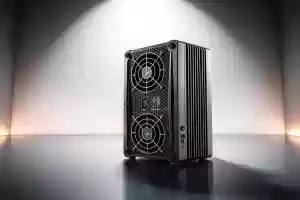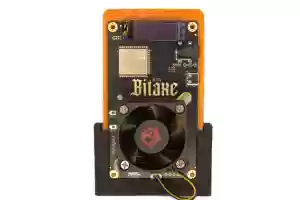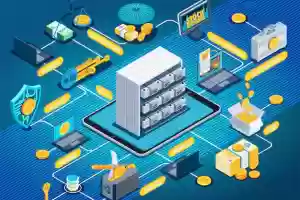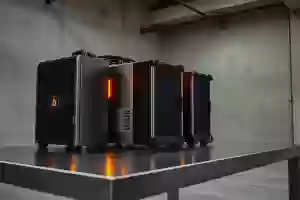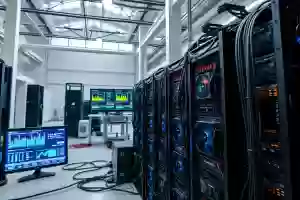How to Mine Bitcoins: A Beginner's Guide to Start Mining
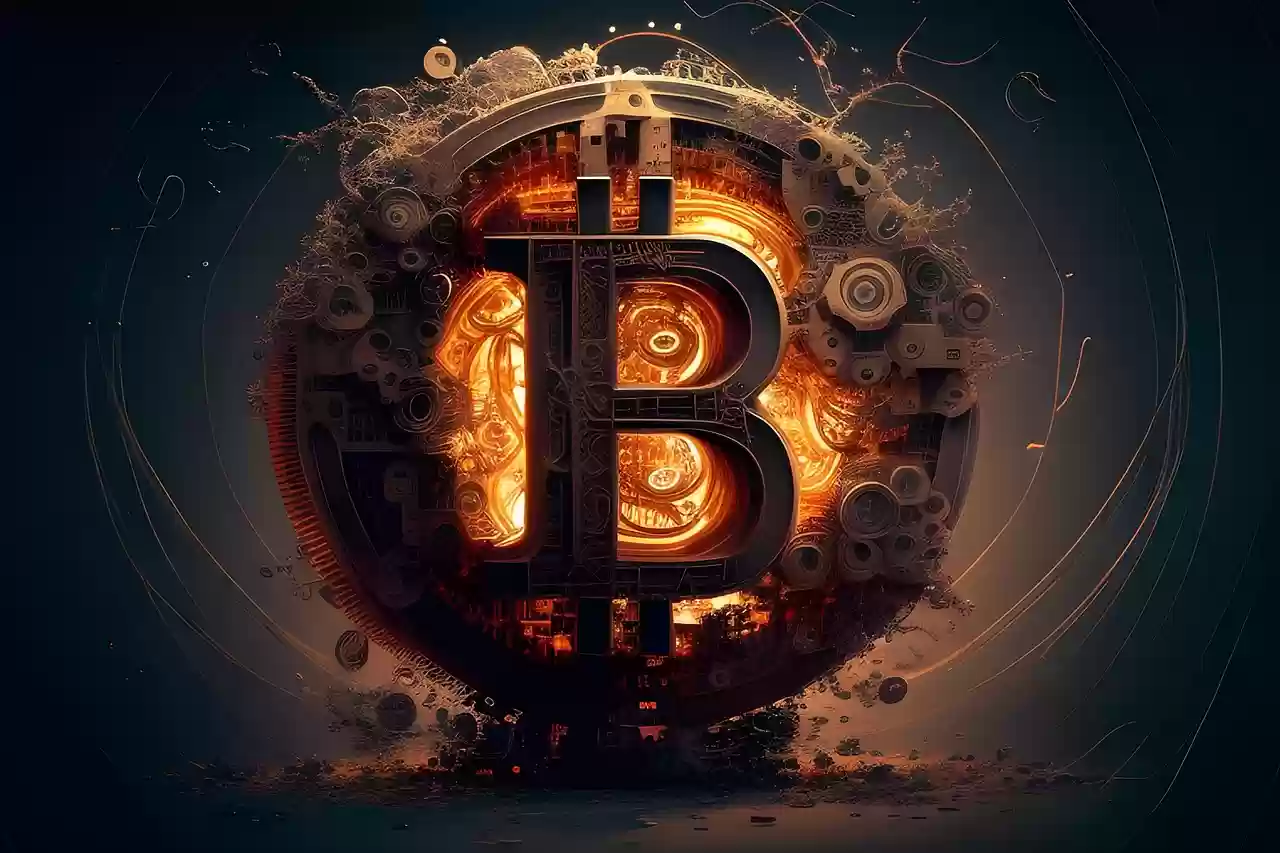 13 Mar 25
13 Mar 25
Ever wondered how Bitcoin gets "created"? It all starts with mining, a process that powers the entire Bitcoin network. By solving complex mathematical puzzles, miners validate transactions and secure the blockchain, all while earning rewards in Bitcoin. Mining doesn’t have to be intimidating; with basic equipment and the right software, even beginners can get started. Whether you're into solo or pool mining, this guide simplifies the essentials to help you begin, and for those eager to dive in, try solo mining with ease right now, free of charge! Ready to explore? Let’s dig in.
What is Bitcoin Mining?
Bitcoin mining is the foundation behind the Bitcoin network's operations, ensuring everything runs securely and smoothly. Essentially, it’s a process where miners compete to solve cryptographic puzzles, validate transactions, and add new blocks to the blockchain. Think of mining as the engine that powers Bitcoin's decentralized system, while simultaneously rewarding miners for their efforts.
Definition and Basics
At its core, Bitcoin mining is all about harnessing computing power to validate transactions and secure the network. When someone sends Bitcoin, miners step in to verify these transactions by solving complex mathematical puzzles known as cryptographic problems.
These puzzles ensure that only legitimate transactions make it onto the blockchain, preventing fraud or double spending. It's like notarizing a document, but instead of a stamp, miners use their computing power to “stamp” the blockchain with new blocks, adding them to Bitcoin's immutable ledger.
For those interested in diving into mining, software like the options listed in the Best Bitcoin Mining Software for Beginners provides simple, user-friendly setups to get started.
The Role of Miners
Miners play a pivotal role in maintaining and growing the blockchain. Their fundamental job is to gather unverified Bitcoin transactions into a block, then validate that block by solving a cryptographic problem. Once successful, their verified block is added to Bitcoin’s chain of blocks (hence, the blockchain).
Not only does this process help secure the entire network, but it also ensures that Bitcoin remains decentralized. Without miners, there would be no consistent way to validate who owns what, risking the collapse of the system.
If you're considering joining the mining process but aren’t ready to go solo, starting with Bitcoin mining pools for beginners can be an excellent way to contribute while sharing resources with others.
Mining Rewards and Difficulty
The reward system for mining Bitcoin is both an incentive and a fascinating aspect of its design. Miners are rewarded with Bitcoin for every new block they successfully add to the blockchain. However, this reward undergoes a "halving" roughly every four years to control inflation. For instance, the reward started at 50 Bitcoins per block but is now down to just 3.125 Bitcoins.
On top of that, miners also earn transaction fees from the blocks they validate. As block rewards decrease, these fees become increasingly important for miners.
But it’s not all rosy, mining isn’t as easy as it was in Bitcoin’s early days. Mining difficulty adjusts approximately every two weeks to ensure blocks are added approximately every 10 minutes. As more miners join the network, the difficulty increases, requiring more computational power to remain competitive. It’s a balance that keeps the network stable and ensures no shortcuts can be taken.
For those worried about electricity costs, check out our guide on reducing energy costs in Bitcoin solo mining. It’s packed with tips to make mining more affordable and efficient.
Bitcoin mining may seem complex, but with the right knowledge, tools, and setup, it can be a rewarding venture, literally! Ready to get started solo? Explore our Solo Mining Plans to set up your mining operation for free and keep all your rewards.
Essential Equipment for Bitcoin Mining
Getting started with Bitcoin mining requires the right tools to ensure efficiency and profitability. Whether you’re just beginning or looking to optimize your setup, knowing the essential components is key. In this section, we’ll dive into the necessary hardware and software, along with storage solutions for your mined Bitcoin.
Hardware Options: Compare ASICs, GPUs, and CPUs for mining
Choosing the right hardware for mining can significantly impact your success. Among the options are ASICs (Application-Specific Integrated Circuits), GPUs (Graphic Processing Units), and CPUs (Central Processing Units). Each has its own benefits and drawbacks, making it crucial to understand which suits Bitcoin mining best.
-
ASICs: These are purpose-built devices designed specifically for Bitcoin mining. They offer unmatched efficiency and hashing power, making them the go-to choice for serious miners. For instance, models like the Antminer series operate at high power efficiencies, ensuring lower electricity costs relative to output. Discover top-rated ASIC miners for 2025 and take your mining to the next level.
-
GPUs: While GPUs are wildly popular for mining other cryptocurrencies, they are less effective for Bitcoin due to the network’s intense difficulty. That said, GPUs are versatile and can be repurposed for gaming or other tasks.
-
CPUs: Although technically capable of mining, CPUs are the least efficient option for Bitcoin. The computational power required nowadays far exceeds what a CPU can handle profitably.
For those weighing their options, check out our guide to top-rated mining hardware to explore what works best for your mining ambitions.
Mining Software: Introduce popular Bitcoin mining software like CGMiner and BFGMiner
After setting up your mining hardware, you’ll need mining software to connect to the Bitcoin network and start solving blocks. These programs serve as intermediaries, allowing your hardware to communicate directly with the blockchain.
Some of the most widely used software includes:
-
CGMiner: Known for its robust features and flexibility, CGMiner is particularly favored by advanced miners. It supports various mining hardware, including ASICs, and provides detailed configuration options.
-
BFGMiner: Designed with modularity and efficiency in mind, BFGMiner is another excellent choice. It supports multiple hashing algorithms and is compatible with various mining rigs.
Both options are reliable, but it’s essential to download software only from trusted sources to avoid malicious programs. Once installed, these tools will manage tasks like adjusting your hardware's settings and reporting your mining progress.
Looking for more beginner-friendly insights? Check out our Bitcoin mining software guide to ensure you get started smoothly.
Recommended Wallets to Store Mined Bitcoins
Once you mine Bitcoin, it’s important to store your rewards safely. Wallets play a vital role in safeguarding your crypto from threats like hacking and theft. There are two main types of wallets to consider:
-
Hot Wallets: These are connected to the internet, making them more convenient for frequent transactions. Popular options include software wallets like Electrum. While handy, their online nature means they are more susceptible to cyber threats.
-
Cold Wallets: These are offline options like hardware wallets (e.g., Ledger Nano S) or even paper wallets. They offer the highest level of security, as they are immune to online-based attacks.
By understanding the essential equipment needed for Bitcoin mining, you can start your journey with confidence. Ready to take the plunge and begin solo mining? Start for free with our Solo Mining Plans and keep all your rewards while learning the ropes of the mining ecosystem!
Getting Started with Bitcoin Mining
Mining Bitcoin may feel overwhelming at first, but breaking it into manageable steps makes the process clearer. Here, we'll guide you through essential concepts and tasks every beginner needs to know, covering mining options, equipment setup, and profit evaluation. Whether you're aiming to go solo or join a pool, this section provides a structured overview to help you succeed.
Solo Mining vs Pool Mining
When starting Bitcoin mining, one of the first decisions you'll need to make is choosing between solo mining and pool mining. Each method has its own set of advantages and challenges, so understanding the differences will help you make an informed choice.
-
Solo Mining: As the name implies, you'll mine on your own, relying solely on your equipment. The major upside? You get to keep all the Bitcoin rewards if your mining is successful. However, solo mining often requires significant investment in high-power devices like ASIC miners, and it may take weeks or months to solve even one block, especially for beginners.
-
Pool Mining: In this setup, you'll join forces with other miners. By combining your computational power, the group increases the chances of successfully mining a block. The rewards are then split among all participants based on their contribution. Pool mining offers smaller but more frequent payouts, making it an appealing choice for those starting out with less powerful hardware.
Want to dive deeper into which option works best for your goals? Check out our detailed comparison on Solo Mining vs. Pool Mining to guide your decision.
Setting Up Mining Equipment
Getting started with Bitcoin mining requires the right hardware, software, and configuration. Here's a simple breakdown to help you assemble your setup efficiently:
-
Choose Your Hardware: For Bitcoin mining, ASIC miners such as the Antminer S19 are commonly recommended due to their efficiency. These devices are optimized to handle Bitcoin's computational requirements far better than GPUs or CPUs.
-
Install Mining Software: Once your hardware is ready, you'll need reliable mining software to connect with the Bitcoin network. Popular choices include CGMiner and BFGMiner, both known for their flexibility and features.
-
Set Up Power and Cooling Systems: Mining rigs consume a lot of energy and generate heat. Make sure your setup includes adequate ventilation and, if possible, energy-efficient measures to cut costs.
-
Connect to a Mining Pool (Optional): If you're opting for pool mining, follow the specific instructions provided by the pool to link your equipment and start contributing.
By configuring your equipment correctly, you'll avoid unnecessary downtime and ensure maximum performance. For further insights, explore our guide to setting up mining rigs for step-by-step assistance.
Calculating Profitability
Before investing in Bitcoin mining, always calculate whether it's worth your time and resources. Here's a helpful formula to evaluate your potential profitability:
- Hash Rate: This measures the computational power your equipment provides. The higher the hash rate, the more likely you are to successfully mine Bitcoin.
- Electricity Costs: Mining draws significant power, especially if using high-performance devices like ASICs. Identify your local electricity rates and factor them into your calculations.
- Current Mining Rewards: The reward for mining a block currently stands at 3.125 Bitcoins, though this reward halves roughly every four years. Don't forget to consider this dynamic when planning long-term mining.
To simplify the process, you can use online profitability calculators, such as those found on BitcoinMining.com. Input your hardware's hash rate, electricity costs, and other relevant factors to gauge whether your operation is likely to turn a profit.
Starting small and scaling up gradually is often the best strategy to manage risks and refine your process as you learn. Ready to get hands-on? Take advantage of our free setup resources by exploring solo mining plans to jumpstart your mining journey today!
Maximizing Mining Efficiency and Profits
Mining Bitcoin can be as rewarding as it is challenging, especially when you're trying to balance energy consumption, hardware costs, and ever-changing profitability. Understanding how to maximize efficiency while reducing unnecessary costs is critical to staying competitive. Let’s break down three key approaches to make your mining operation as profitable as possible.
Optimizing Energy Usage
Did you know electricity costs often represent the bulk of a miner's expenses? To make your mining endeavors more profitable, reducing energy consumption is non-negotiable. Energy efficiency isn’t just about saving money, it's about optimizing your equipment and being mindful of the environment.
Here are some practical steps to enhance energy usage:
- Upgrade to Energy-Efficient Equipment: Modern mining hardware like ASIC miners is designed to deliver better performance with lower energy input. Choosing the right hardware can dramatically reduce costs over time. Check out Reducing Electricity Costs for Bitcoin Mining: Tips and Insights for valuable suggestions on selecting efficient devices.
- Manage Heat Effectively: Heat management is crucial since overheating hardware can cause inefficiency and lead to costly breakdowns. Invest in proper cooling systems and keep your setup in a cool, well-ventilated area.
- Use Power During Off-Peak Hours: Shift your mining activities to times when electricity is cheaper, such as overnight, to save more on operational costs.
Looking for high-level strategies? Read about Maximizing Your Bitcoin Mining Profits for expert-level tips and strategies.
Upgrading Hardware and Software
As mining technology evolves rapidly, sticking to outdated hardware or software can significantly lower your mining efficiency and profits. In this field, staying updated isn’t an option, it’s a necessity.
Why Upgrading Matters
- Efficiency Gains: Modern hardware like the latest ASIC miners provides better performance and consumes less electricity.
- Higher Hashrates: Upgraded hardware delivers more hashing power, increasing your chances of solving blocks and earning Bitcoin.
- Software Enhancements: Mining software updates often come with optimizations, bug fixes, and support for new hardware. Running the latest version can help you unlock better performance and compatibility.
Consider monitoring your system’s performance regularly to decide the best time to upgrade. For practical insights into squeezing maximum performance from your hardware, don’t miss our guide on overclocking mining rigs.
Transition to Green Energy
As global concerns about energy usage grow, many in the mining industry are making the shift to renewable energy sources like solar, wind, and hydro. This isn’t just about being eco-conscious, it’s also about sustainability and long-term savings.
Benefits of Renewable Energy
- Lower Energy Bills: While installing renewable energy systems like solar panels may have upfront costs, they can drastically cut your electricity expenses in the long run.
- Eco-Friendly Impact: Eco-conscious mining is crucial for improving Bitcoin’s reputation as an energy-intensive asset.
- Future-Proofing Against Regulations: With governments around the world introducing stricter energy regulations, transitioning to green energy solutions now can protect you from future constraints.
Mining operations in countries with abundant renewable energy resources, such as Iceland and Canada, have already achieved cost-effective and sustainable mining setups. Want to explore this trend further? Check out how green energy is shaping mining profitability.
Transitioning to renewable energy isn't just a good practice, it’s becoming a necessity as Bitcoin mining evolves. Whether you're just starting or growing your operation, this shift is worth considering for both profitability and environmental benefits.
The Future of Bitcoin Mining
As Bitcoin mining evolves, new challenges and opportunities emerge for miners around the globe. From adopting modern technologies to navigating emerging regulations, the future of Bitcoin mining promises to be dynamic. Whether you’re a beginner or a seasoned mining enthusiast, understanding the changing ecosystem is essential to stay ahead.
Opportunities in a Changing Ecosystem
The Bitcoin mining ecosystem is continually changing, creating new opportunities for both small-scale and large-scale operations. Here’s what you should know:
-
Adoption of New Technologies: The technology behind mining is advancing rapidly. Improved hardware such as more energy-efficient ASIC miners is enabling better profitability with lower energy consumption. Additionally, AI-based algorithms are increasingly being used for predictive maintenance and efficient resource allocation. For beginners, this guide on starting with ASIC miners provides critical insights into kicking off your operation.
-
Opportunities for Small-Scale Miners: Smaller miners are finding ways to thrive by exploring unique setups like solar-powered mining rigs and community-based ventures. With global calls for decentralization, there’s a growing emphasis on empowering individual miners. For instance, solo mining remains an option worth considering, as detailed in our analysis of Bitcoin solo mining.
-
Profitability Predictions: Despite the fluctuating difficulty levels, mining profitability remains a topic of considerable excitement. Upcoming block rewards halving in 2024 may reduce rewards but could also drive higher Bitcoin prices, making it advantageous for miners in the long run. According to an insightful article on Investopedia, transaction fees will likely play a bigger role in providing income to miners once the finite Bitcoin supply is fully mined.
The opportunities ahead require adaptability. Whether you're planning for green energy adoption or scaling your operations, the future of Bitcoin mining presents multiple avenues for growth.
Challenges Ahead
With opportunities come challenges. Future Bitcoin miners must contend with several hurdles, some of which may define the sustainability of their operations.
-
Increasing Mining Difficulty: As more miners enter the network, the difficulty of solving blocks is steadily rising. This means you’ll need increasingly powerful equipment to maintain profitability. Mining difficulty adjustments ensure block intervals are consistent, but they also make the competition tougher for all participants.
-
Environmental Criticisms: Bitcoin mining’s energy consumption has faced global criticism for contributing to carbon emissions. A growing number of governments and organizations demand eco-friendly mining practices. Shifting towards renewable energy sources like hydroelectricity or solar power is no longer optional, it’s quickly becoming an industry standard. Solutions like integrating solar panels to offset electricity costs have been successful for many miners, paving the way for future innovations.
-
Regulatory Changes: Around the world, Bitcoin miners are observing evolving policies aimed either at curbing mining activities or regulating consumer electricity usage for mining-related purposes. Countries like China have implemented strict measures limiting mining, while others like the U.S. are leaning toward taxation and greater transparency requirements. Navigating these regulations will be crucial for miners to stay compliant and reduce operational disruptions. Dive deeper into mining challenges in 2025 for insights into how miners can adapt.
Bitcoin mining is not without its obstacles, but innovation and strategic planning can help you navigate these challenges. By staying informed and preparing for upcoming shifts, miners can continue to succeed in this ever-evolving space.
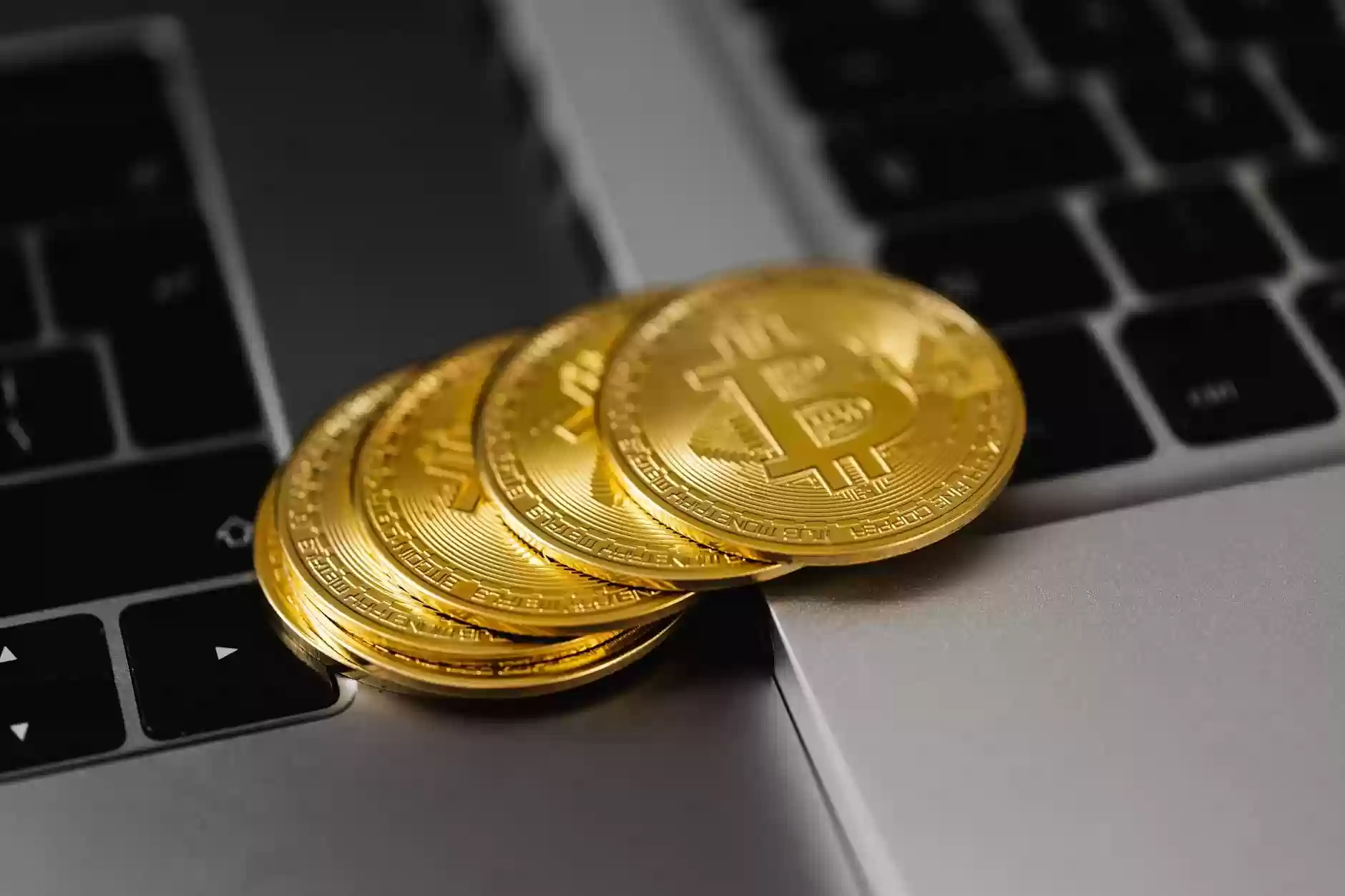
Photo by Kaboompics.com
Conclusion
Bitcoin mining offers both a fascinating glimpse into blockchain technology and a tangible opportunity to earn cryptocurrency. Understanding essential equipment, mining software, energy efficiency, and profitability evaluation is key to starting on the right foot.
Whether you're interested in solo mining to maximize rewards or leaning towards pool mining for steady payouts, the most important step is to take action. Start small, test the waters, and build your mining setup over time. If solo mining intrigues you, check out our detailed guide on how to set up Bitaxe for solo mining.
Ready to try solo mining today? Take advantage of our free solo mining services and explore how simple it is to start mining Bitcoin on your own terms. The journey is challenging but rewarding, don’t wait to begin!











